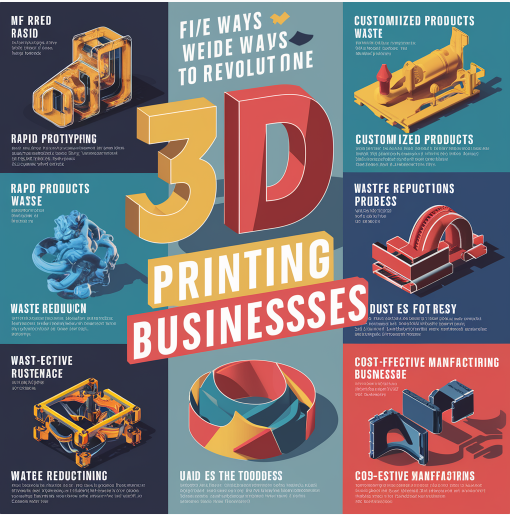Due to its ability to provide new opportunities in manufacturing, design, and production, 3D printing has recently brought about an industry revolution. This technology, which was first created for quick prototyping, has spread into many industries and is now able to provide organizations with distinct advantages that may greatly increase their competitiveness. 3D printing is changing how businesses run, from lowering production costs to allowing more personalized items. This article examines five major ways that 3D printing might provide companies with a competitive advantag
1.Cost Efficiency and Material Savings
The capacity of 3D printing to lower production costs is one of its biggest benefits. Significant material waste often occurs in traditional manufacturing processes, particularly when subtractive techniques are applied. On the other hand, since 3D printing uses an additive process, the material is only utilized when required. This lowers the price of raw resources while also minimizing waste. Additionally, production costs can be greatly reduced by being able to create complicated geometries without the need for extra molds or equipment. This translates into lower overhead costs and improved resource efficiency for firms, which may be especially helpful in sectors with high material costs.
2.Rapid Prototyping and Product Development
Rapid prototyping is made possible by 3D printing, allowing companies to swiftly develop and test prototypes before finalizing their ideas. This capacity is essential for shortening the time it takes to build a product. Businesses may quickly make the required changes to a prototype after producing many versions and testing them for functionality and aesthetics. This shortens the time it takes for new items to hit the market and gives designers more creative freedom. Consequently, companies may react to market trends and customer requests faster, giving them a competitive edge by enabling them to introduce new items ahead of their rivals.
3.Customization and Personalization
Another significant advantage of 3D printing is the ease with which objects may be customized. In contrast to traditional manufacturing, which frequently necessitates a large amount of setup and retooling for customized products, 3D printing may create small quantities or one-off items for a minimal additional expense. This is especially helpful in markets where customized items can fetch higher prices, such as healthcare, fashion, and consumer goods. For instance, 3D printing is utilized in the medical industry to make personalized dental implants and prostheses for each patient. By offering bespoke solutions, businesses can stand out from rivals and serve specialized markets, thereby expanding their clientele. For those looking to gain skills in this innovative technology, taking 3D printing classes in North Philadelphia can provide a solid foundation and help individuals or businesses tap into this growing market.
4.Supply Chain Optimization
Since 3D printing eliminates the need for large inventories and warehousing, supply chains may become more efficient. Businesses may lower their stock levels and save money by holding unsold items since products can be produced on demand. This is particularly advantageous for businesses whose goods have short lifecycles or whose demand fluctuates quickly. Moreover, local production is made possible by 3D printing, which lessens the need for long-distance shipping, its related expenses, and its negative environmental effects. Businesses may increase their operational responsiveness and efficiency by optimizing the supply chain, giving them a major competitive edge in the fast-paced market climate of today.
5.Innovation and Intellectual Property Management
Because 3D printing gives companies the means to test out new ideas and materials without having to make large financial commitments, it promotes innovation. This encourages experimentation and originality, which results in the creation of original goods and solutions. Additionally, businesses may better safeguard their intellectual property (IP) by managing a larger portion of the production process internally. A lower number of manufacturers and external suppliers lowers the danger of intellectual property theft. Furthermore, since 3D printing data are digital, it is simple to secure and safeguard designs. This is especially crucial in sectors like technology and pharmaceuticals, where intellectual property is a vital asset.
Conclusion
Numerous advantages of 3D printing may provide companies with a competitive advantage. This technology is changing the way that manufacturing is done, from supply chain optimization and customization to cost-effectiveness and quick prototyping. Furthermore, 3D printing helps organizations remain ahead of the competition in marketplaces by fostering innovation and improving intellectual property protection. The influence of 3D printing technology on corporate operations and strategy will only increase as it develops and becomes more widely available. Businesses that use this technology may position themselves as leaders in their respective fields and receive a lot of advantages.
